Saturday 11th January 2020
9-
St Petersburg was founded on 27 May 1703 by Tsar Peter the Great who had a vision, following visits to the Netherlands and Great Britain, of building Russia’s first European city. It is certainly conceived on a grand scale with wide boulevards, extravagant palaces and vast ceremonial squares.
Lying on the River Neva delta, St Petersburg includes over 300 km of rivers, tributaries and canals: Peter apparently originally planned to use boats for transport in the summer months. In winter people would be able to cross the frozen river on foot or by horse and carriage. A temporary bridge would be built each summer.
St Petersburg was the capital of the Russian Empire between 1712–1728 and again between 1732–1918: in total around 200 years. Peter II, was crowned at the age of 11, and those acting as regents for the young monarch transferred the capital from St Petersburg or Moscow from 1728 to 1732. Peter II tragically died of small pox on the day planned for his wedding and St Petersburg was subsequently reinstated as the capital of Imperial Russia. It ceased being the capital in 1918 after the Russian Revolution of 1917.
Having had our training from Marina the day before, we confidently took the Metro.
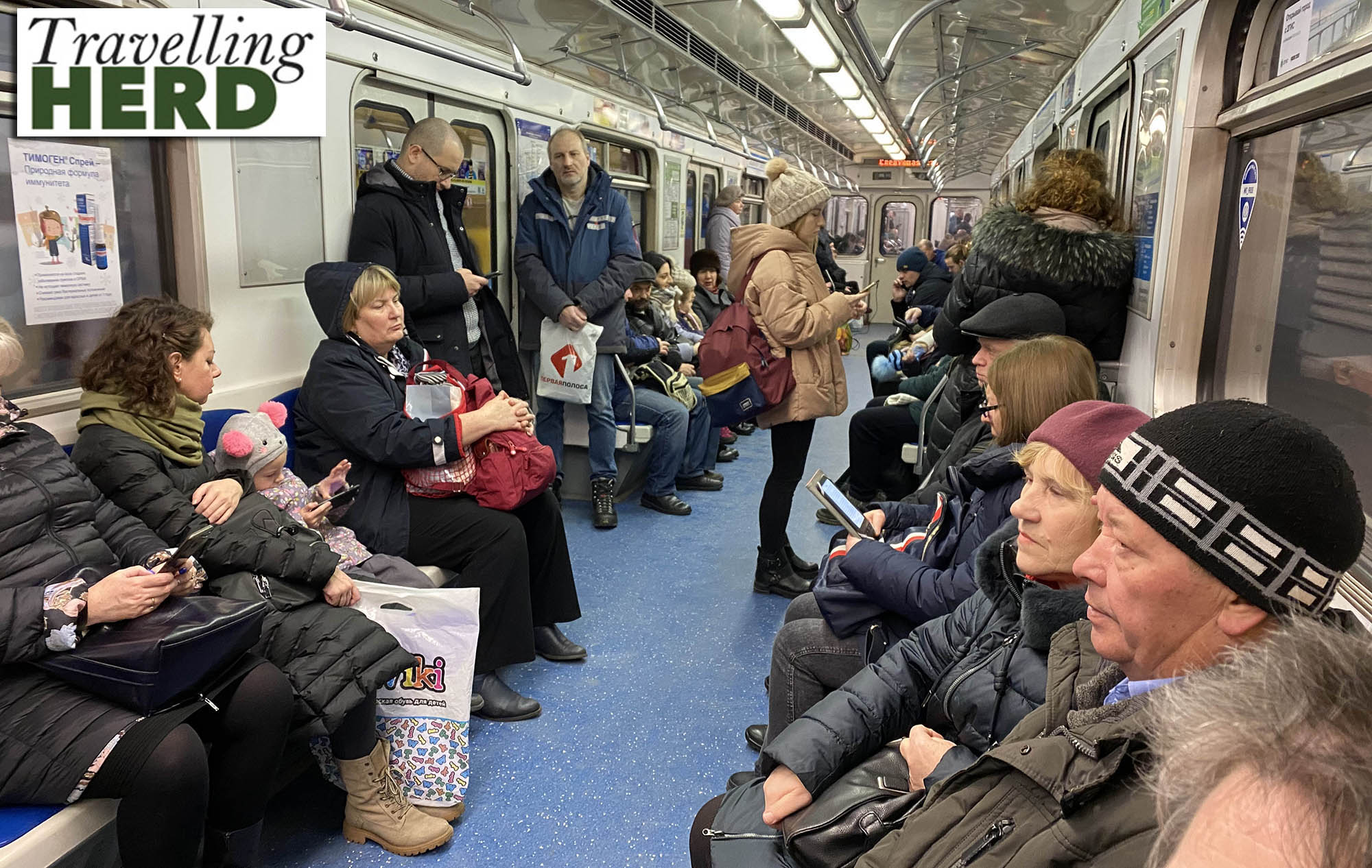
Back above ground we walked over to the Peter and Paul Fortress, where the building of St Petersburg first started on Zayachy (Hare’s) Island, the closest island to the sea in the Neva Delta. Within a year, a citadel with six bastions was completed using earth and timber. This was rebuilt in stone between 1706 and 1740: Peter the Great restricted stone buildings everywhere else in Russia so that all the stone masons would have to come to St Petersburg to work.
Within the fortress we visited the Saint Peter and Saint Paul Cathedral.
Whether you support the concept of a monarchy or not, the assassination of the Romanovs on 17 July 1918 is, if nothing else, a family tragedy. Saint Peter and Saint Paul Cathedral is vast, imposing and exquisite and is truly a mausoleum built for royalty.
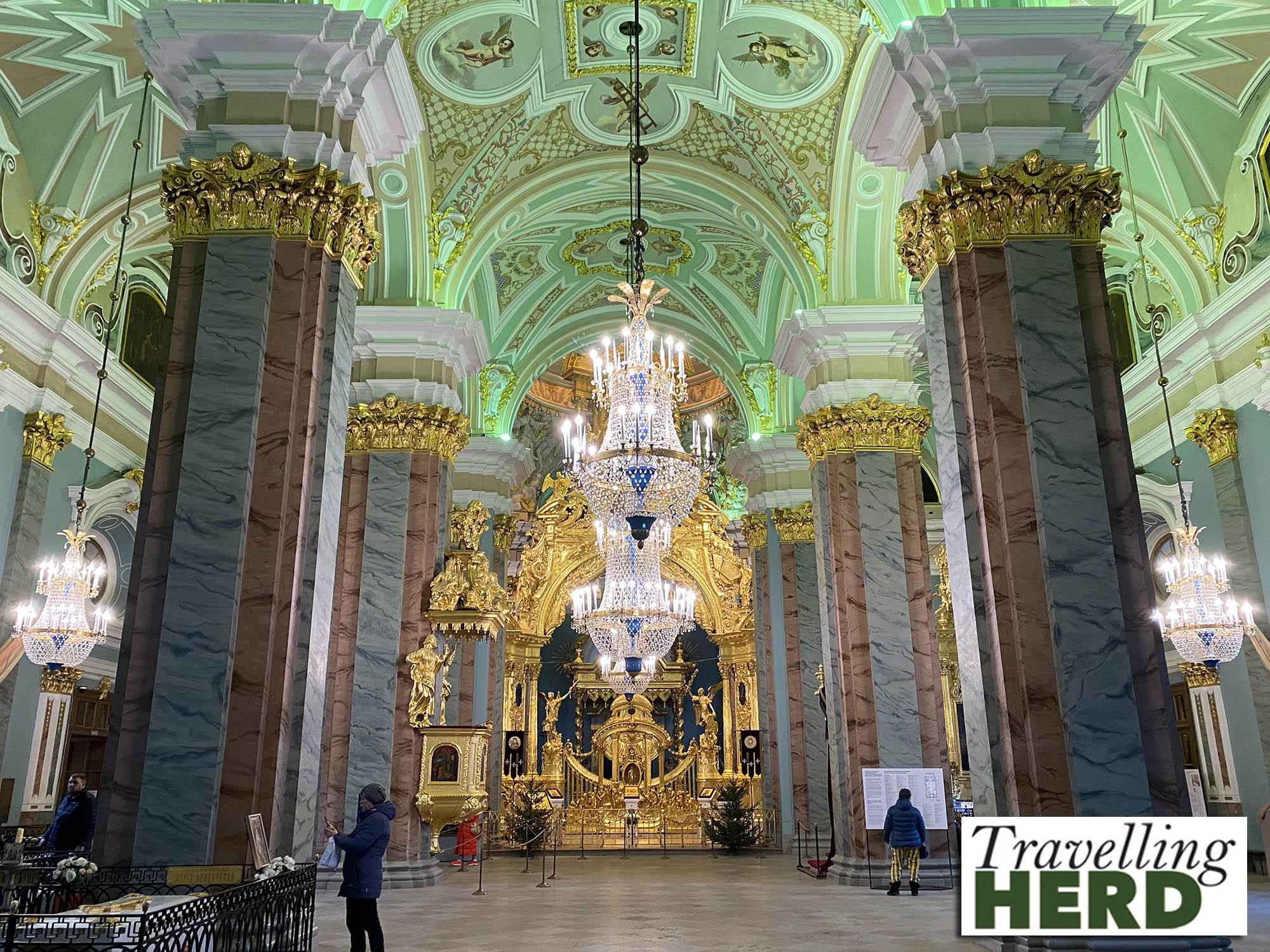
In 1979 the remains of Nicholas II and some of his family were unearthed but this discovery was not made public until later. Their identity was eventually confirmed by DNA testing and they were then laid to rest in a side chapel of the Saint Peter and Saint Paul Church on 17 July 1998, exactly 80 years after their assassination.
The remains of Nicholas II‘S mother, the wife of Alexander III, Maria Feodorovna, who died in 1928 were also reinterred here in 2006 as she wished to be buried next to her husband, thus reuniting the Romanovs posthumously.
Rest in peace.
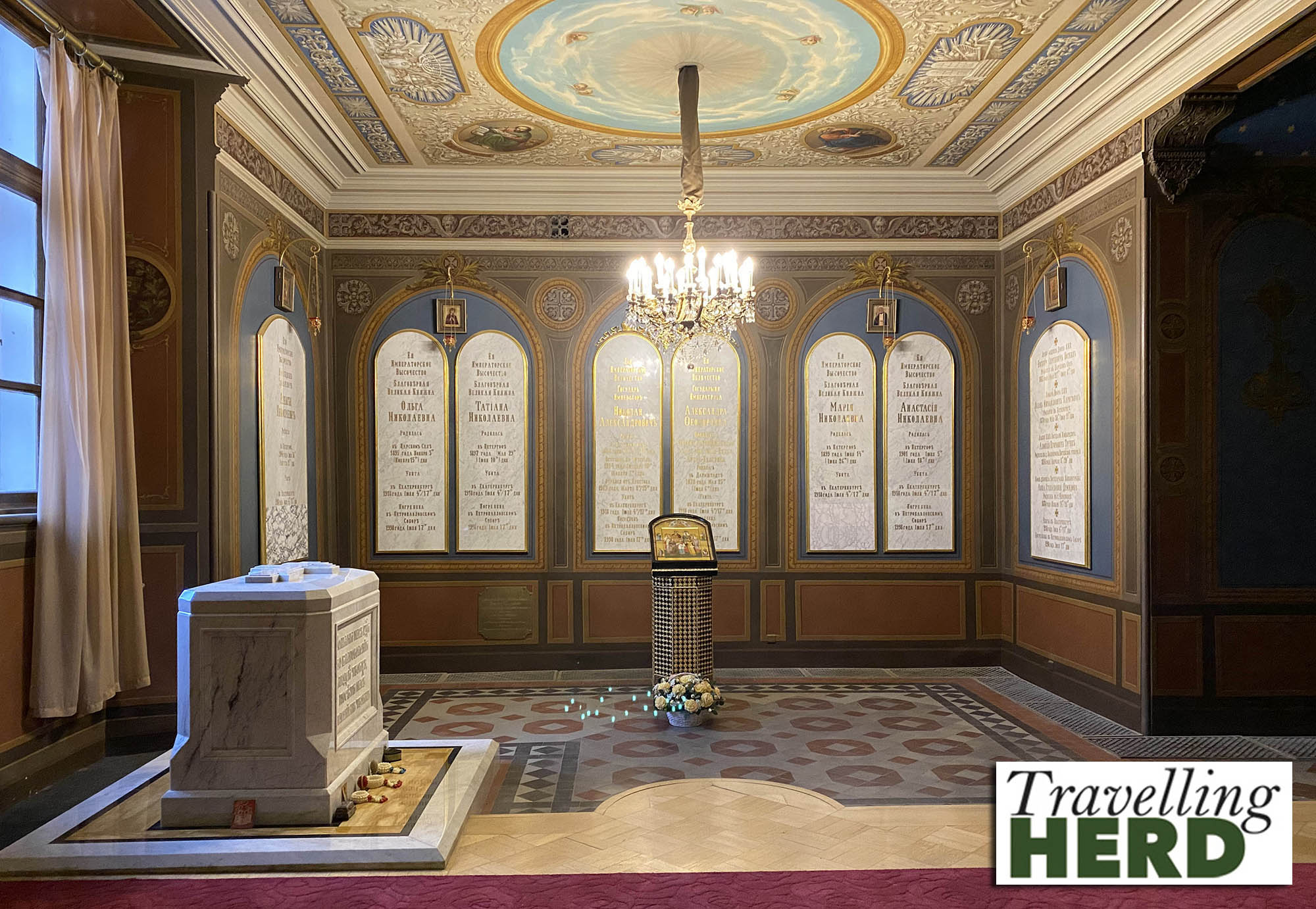
The assassinated Romanovs were variously canonised in 1981 and 2000. As you walk round there are extensive displays about the Romanovs. Matilda was particularly disappointed to read that, of the staff and servants who accompanied Tsar Nicholas II and his family and shared his fate, only the doctor was canonised. She has not been able to verify this as various sources on the internet state that all the staff were sanctified. But, if it is true, how ironic that those who profess all men are equal in the eyes of the Lord should be swayed by education and status in this matter.
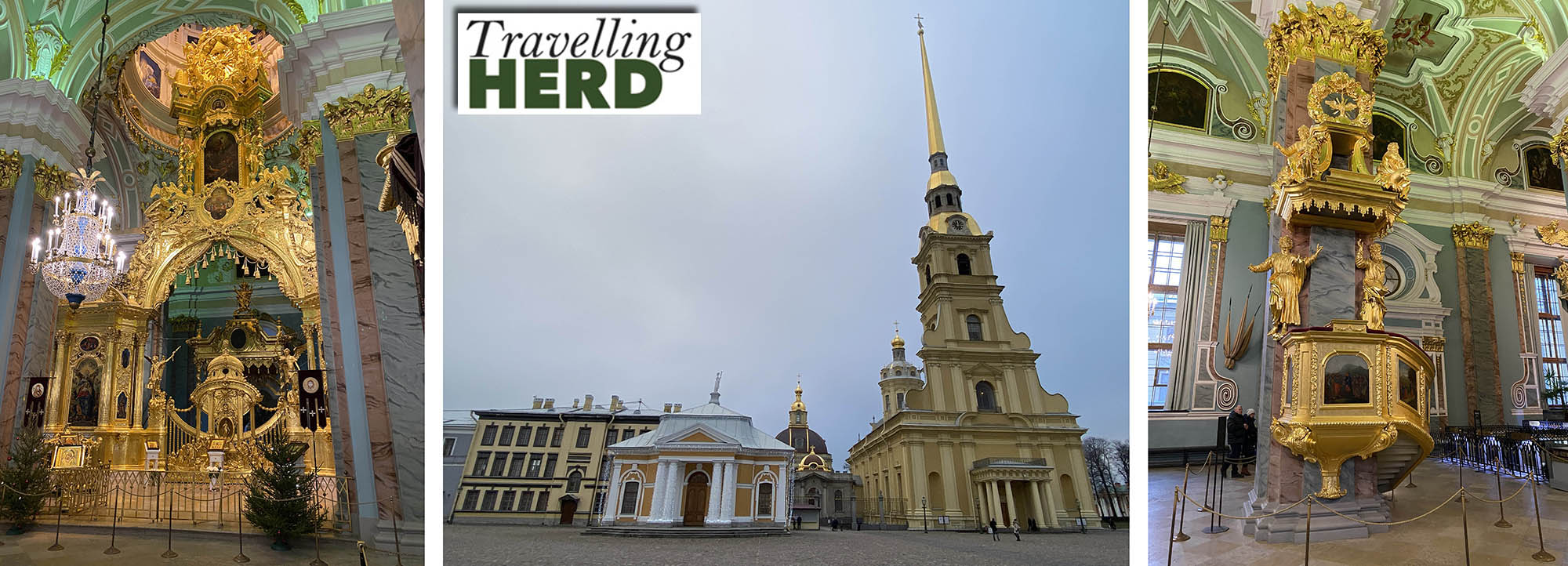
The Grand Ducal Mausoleum, next to the cathedral, was built in 1896 to hold the tombs of dukes and duchesses of Russia. It is considerable less ornate but impressive none the less.
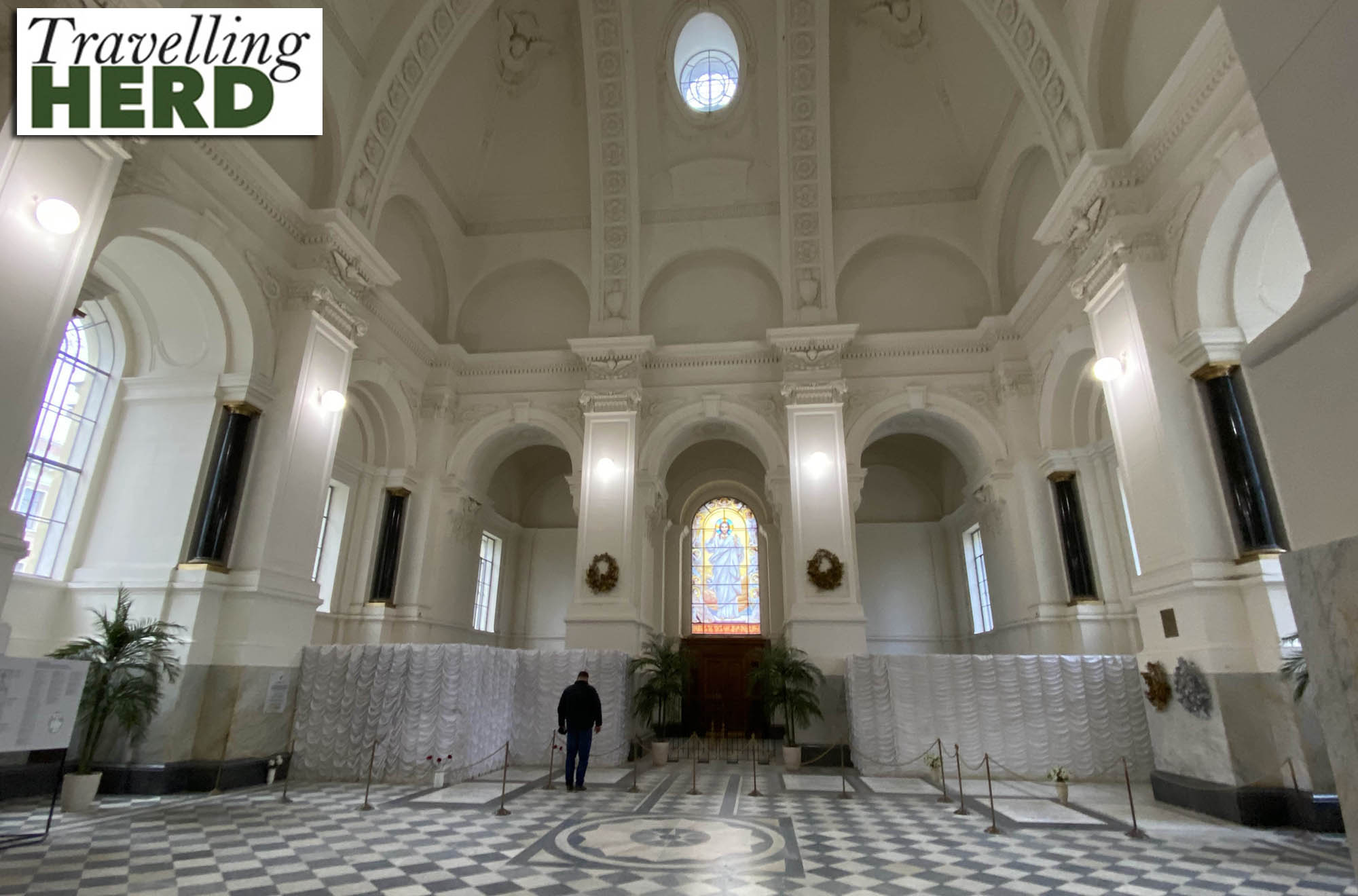
From around 1720 the Peter and Paul Fortress served as a prison for high profile inmates, more recently these included Fyodor Dostoevsky and Leon Trotsky.
The St Petersburg Mint [below], originally established in 1724 by Peter the Great, still produces coins.
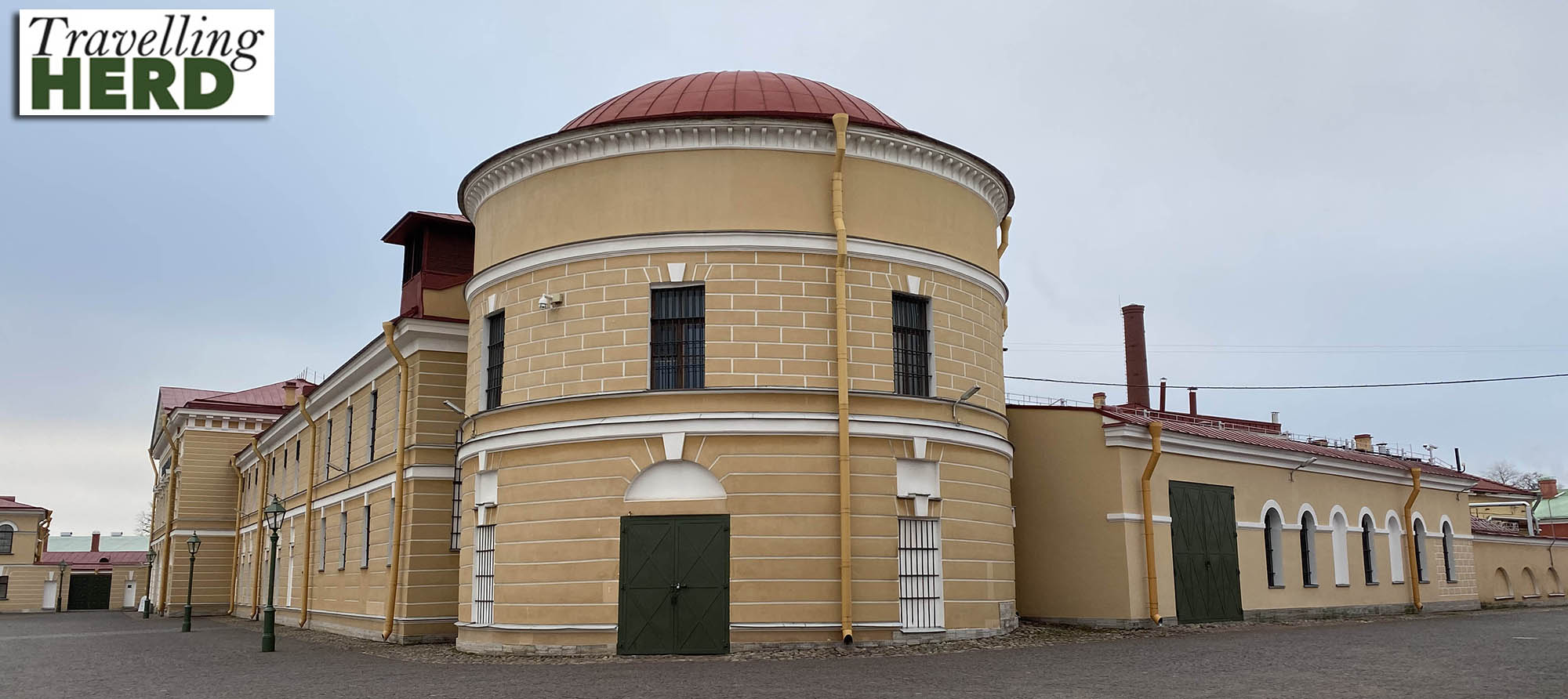
Walking back we passed the Rostrum Columns, erected on either side of the Stock Exchange and completed in 1811. They are decorated with protruding ship prows. Originally there were braziers at the top which were used as beacons for shipping. These have since been replaced by gas torchers which are only lit for ceremonial occasions.
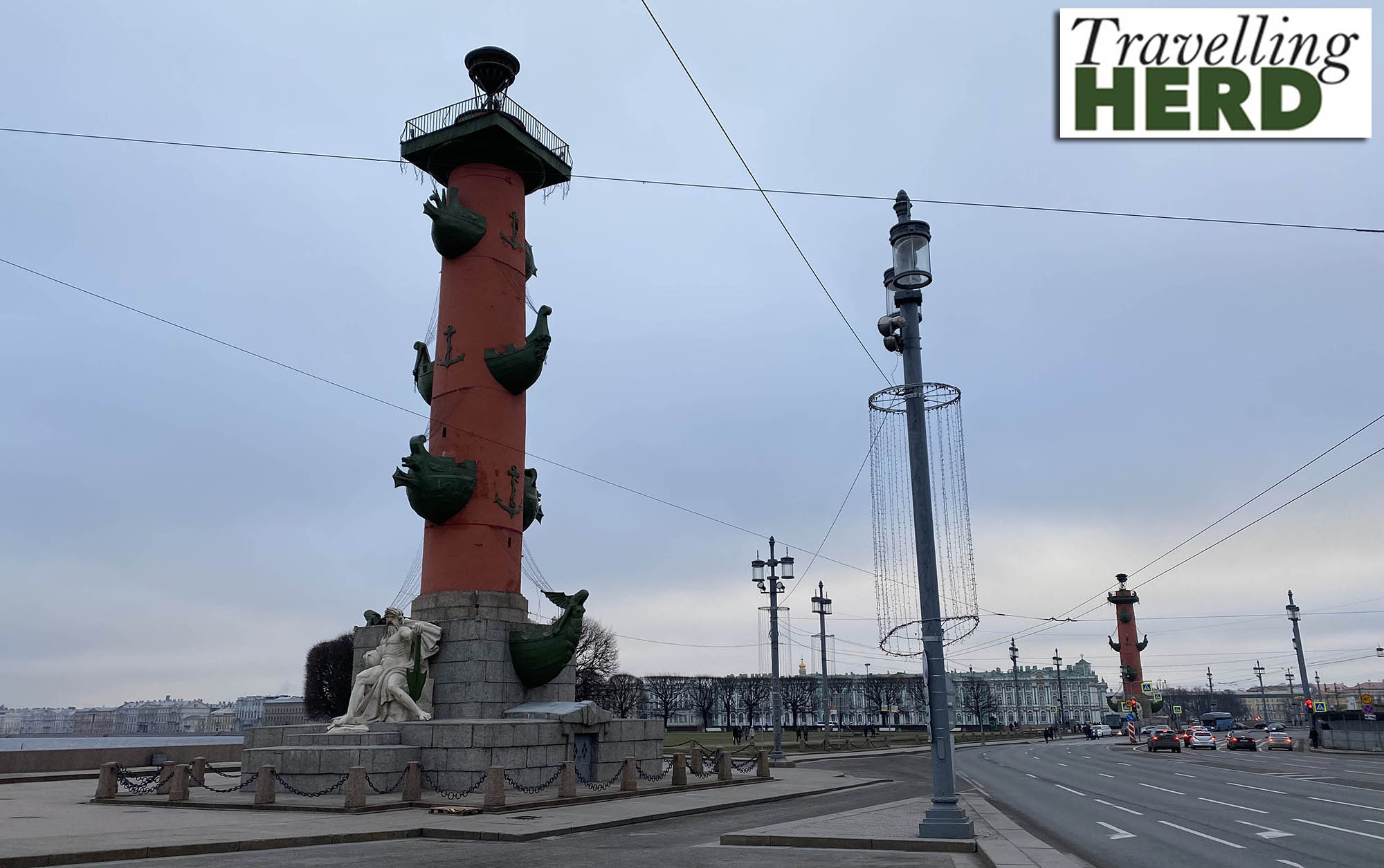
From here we walked to Saint Isaacs Cathedral which was the largest cathedral in Russia when it was built between 1818 and 1858.
It was declared a museum in 1931, although services are still held here, but only on major ecclesiastical occasions.
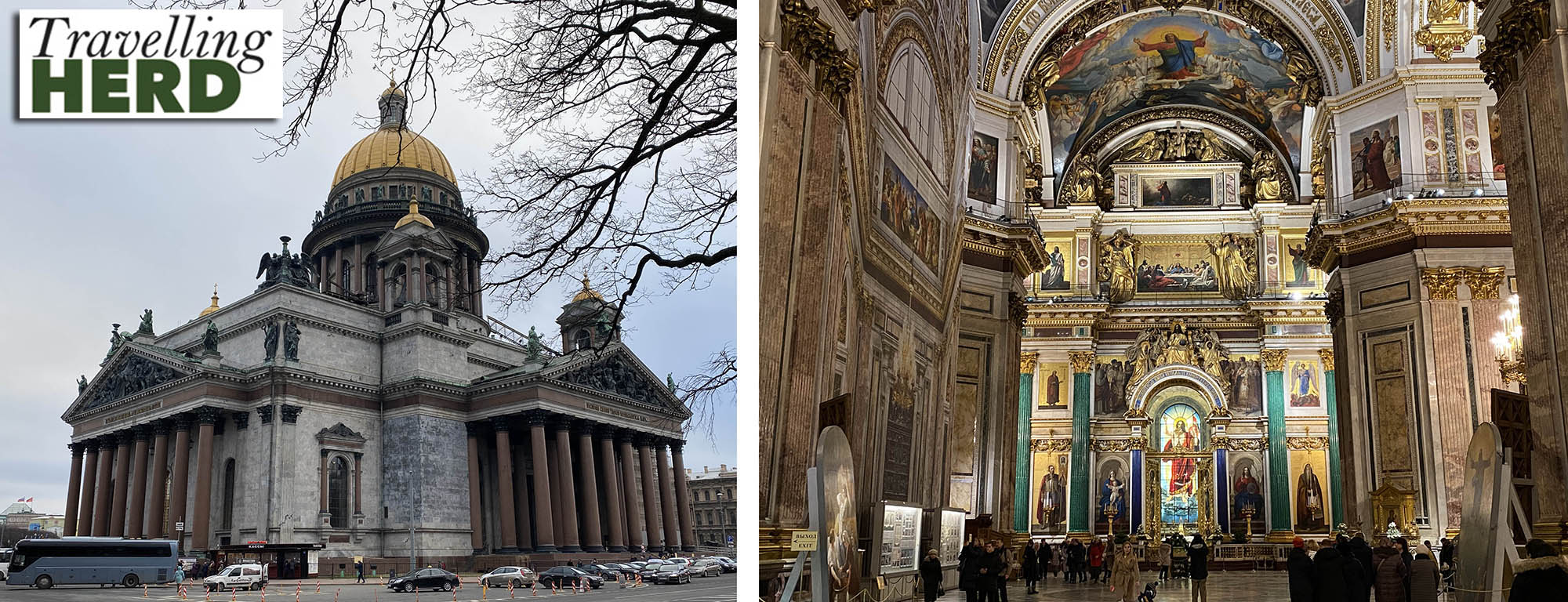
The interior decoration is lavish and ornate, including detailed mosaic icons and columns made from lapis lazuli [below centre] and malachite [below right].
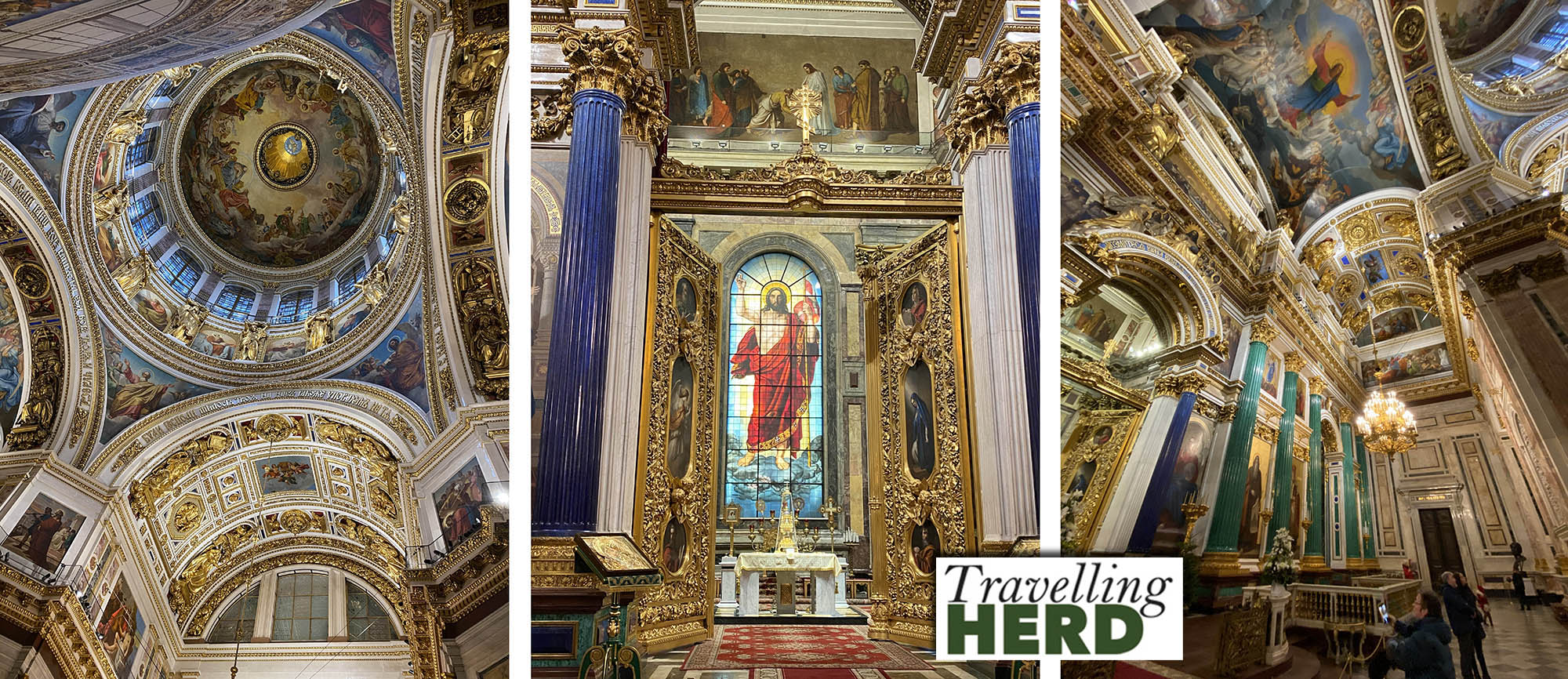
You can buy a ticket for 200 rubles for the colonnade and climb the 262 steps [which are helpfully numbered both on the way up and the way down] . . .
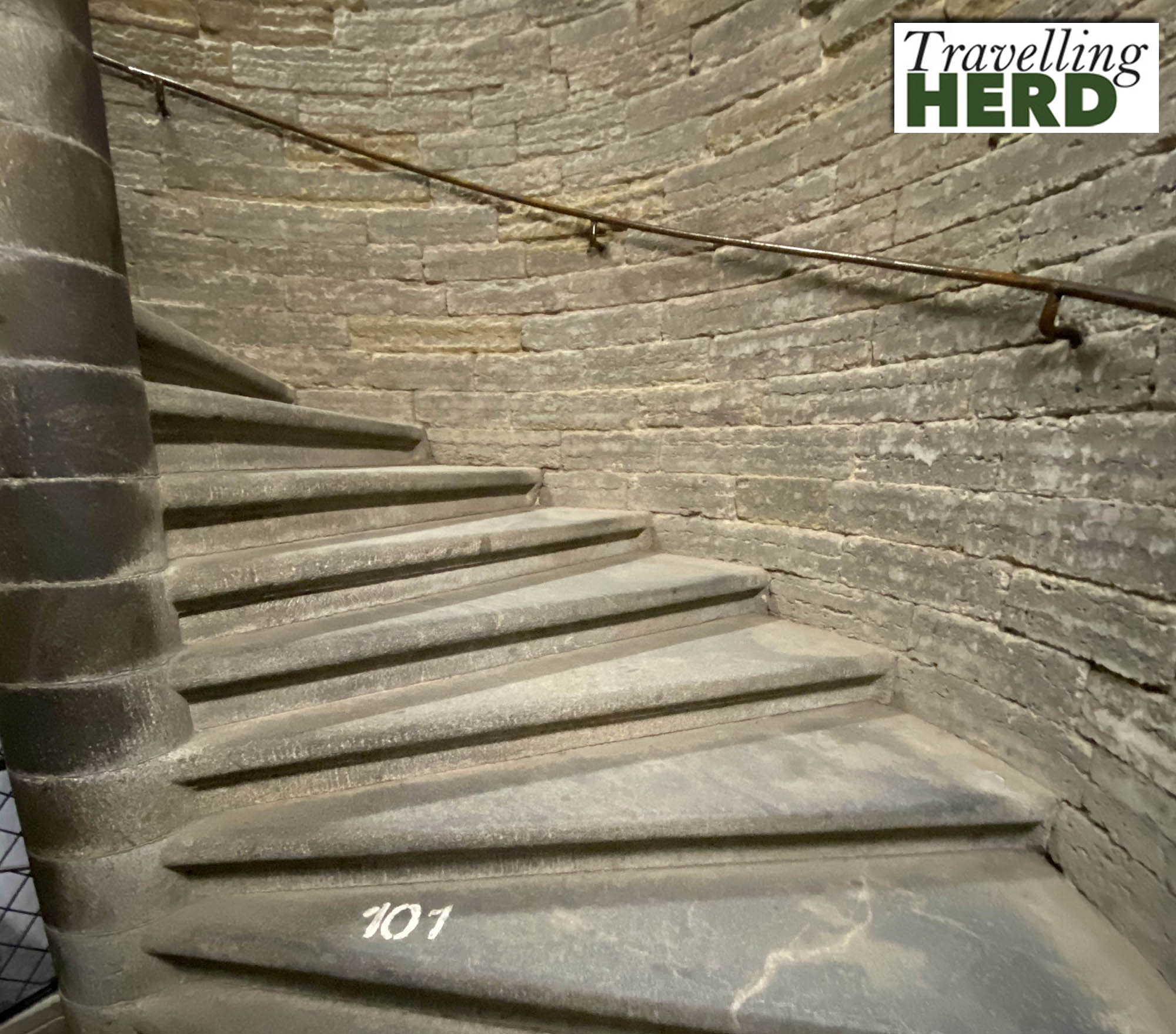
. . . to enjoy the panoramic views . . .
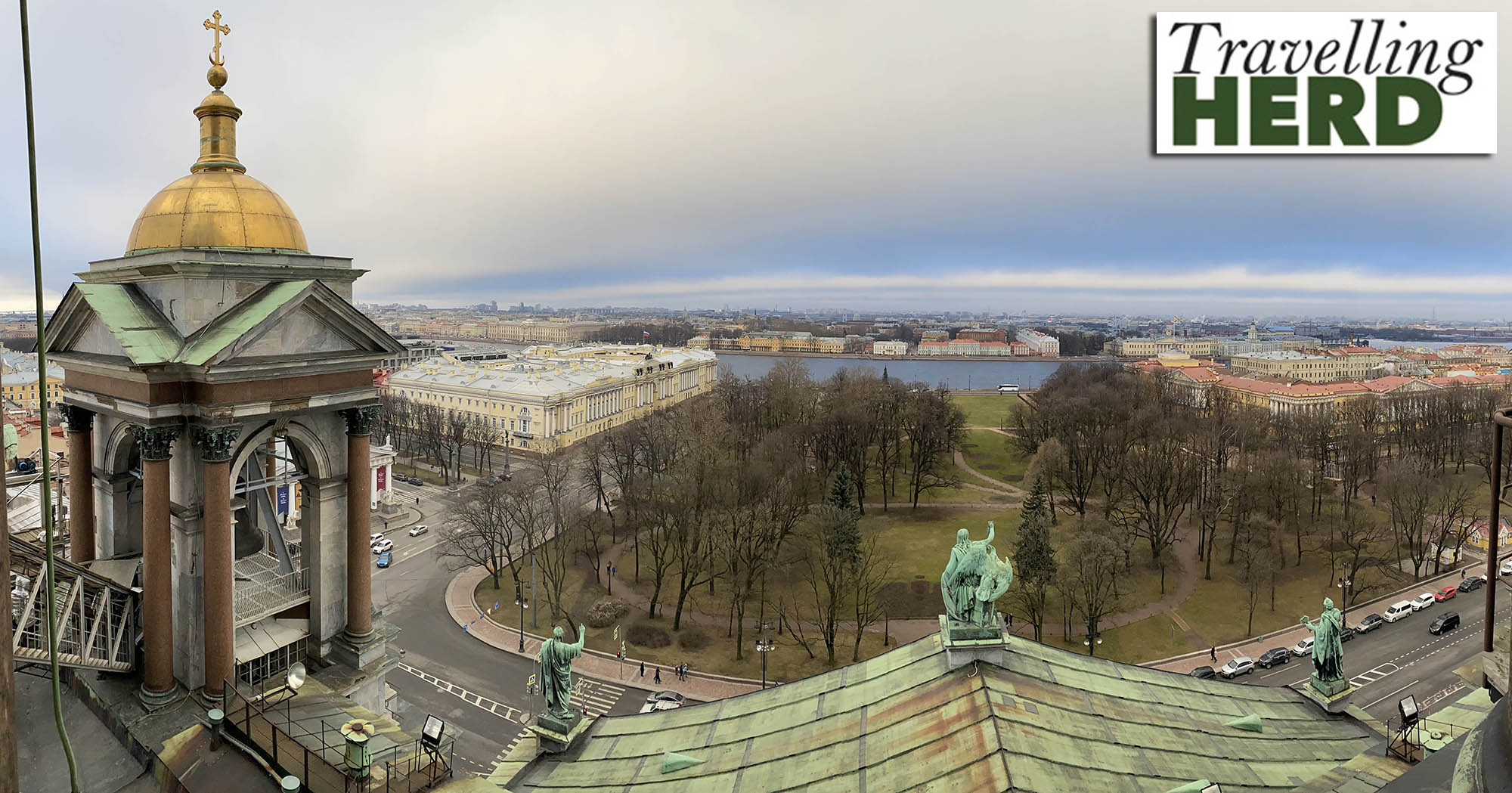
. . . across the city.
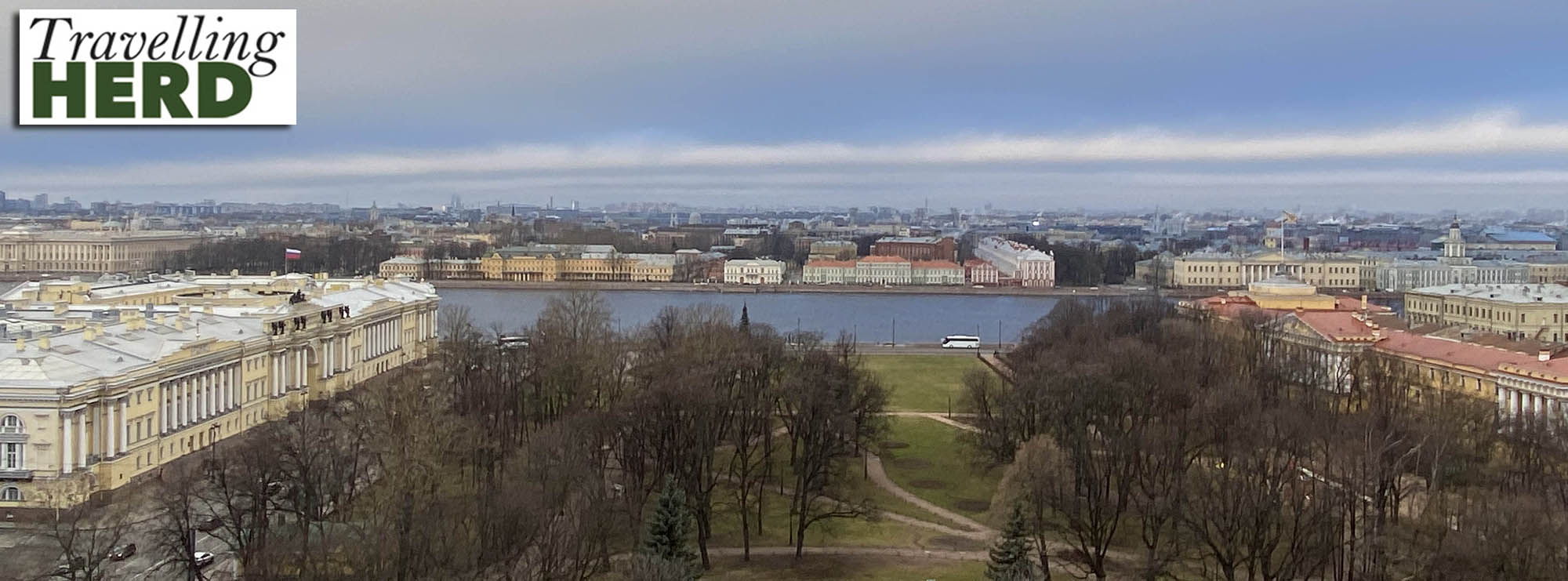
Close by, just off Nevsky Prospekt is the Catholic Church of Saint Catherine which is the oldest Catholic church in the Russian Federation. Its congregation has been persecuted, and it was closed and ransacked in 1938. In 1947 it was further damaged by fire. Subsequently for thirty years it was used as storage for the “Museum of History of Religion and Atheism” which was housed in St Issac’s Cathedral. It is less ornate than many churches but the interior is both attractive and calm.
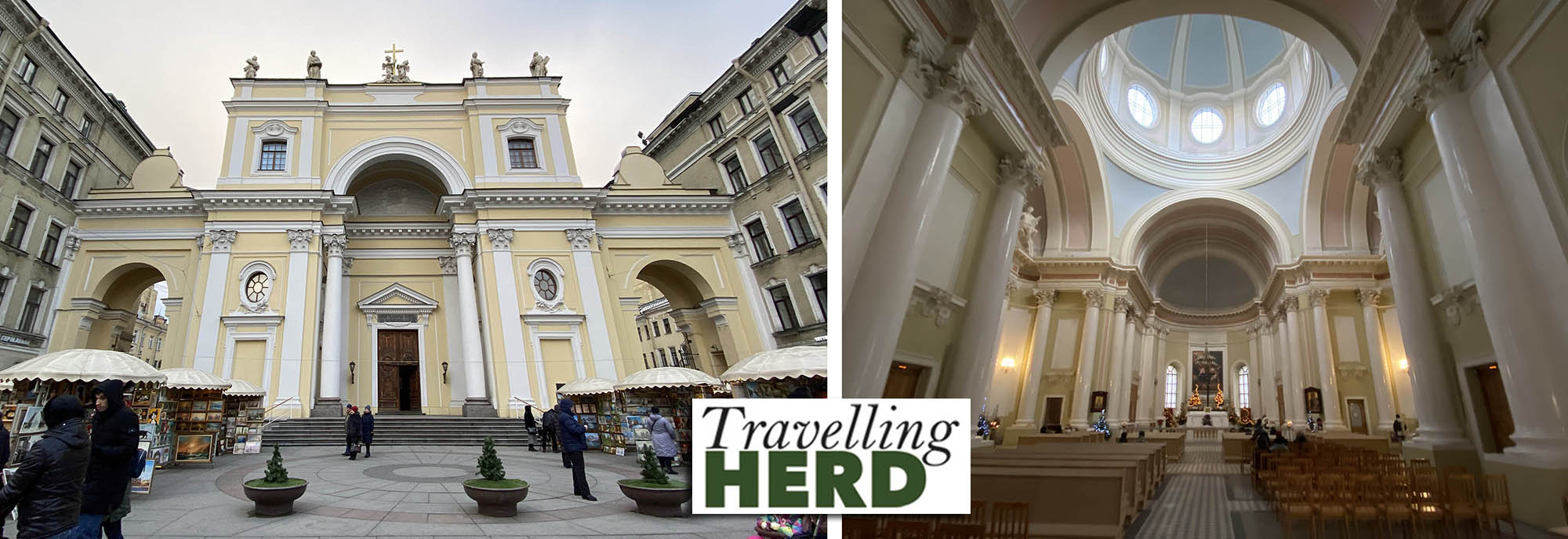
Turning off Nevsky Prospekt into the rather prosaically named Passage [no really] you enter a western-style capitalist emporium.
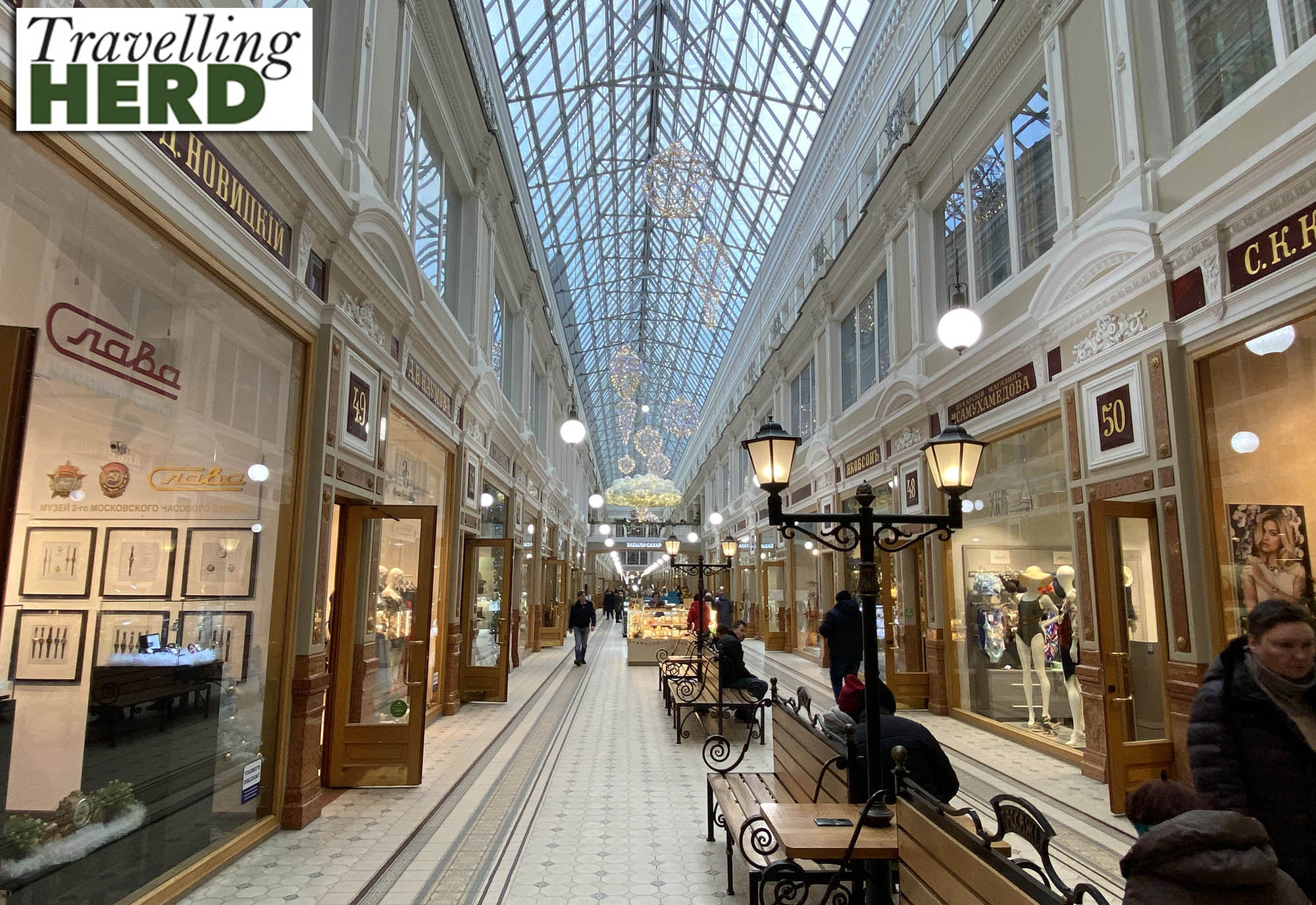
Also on Nevsky Prospekt you find the Kupetz Eliseevs complex, including the beautiful food hall. This was designed by Gabriel Baranovksii and built between 1902 and 1903 for the Elisseeff Brothers. Although controversial at the time, it is one of the most striking examples of Art Nouveau architecture in St Petersburg.
From 1917 to the 1990s, the shop was operated by a state company and was known as Gastronom No. 1. There have been plans to convert this beautiful building into a perfume shop which have met with resistance from the residents of St Petersburg. Long may it survive as a food hall.
Currently, musicians play and serenade shoppers from a balcony and you can have coffee at seats which radiate from a central palm tree.

Matilda spotted Stroganov Palace as we were passing. It is currently somewhat hidden behind some hoardings. We planned to enter and look round but, as with many historical monuments, it is compulsory to leave coats in the cloakroom. As we did not want to leave all our valuables behind, we decided this, along with Peterhof and St Catherine’s Palace, could wait for a return visit in warmer weather. It does make sense as at this time of year everyone is wearing such bulky outdoor clothing. We learnt our lesson and took fewer valuables with us the following day.
Finally, after a day of culture and sightseeing, Robert felt in need of liquid refreshment.
GreenBearRuss was not on the list of recommendations we had identified in advance, but we walked past it and were drawn in. This pub has a very good selection of beers and is not far from Uprising Square. The attentive staff kept an eye on our glasses and offered refills at appropriate intervals. Robert would recommend GreenBearRuss.

Route Map:
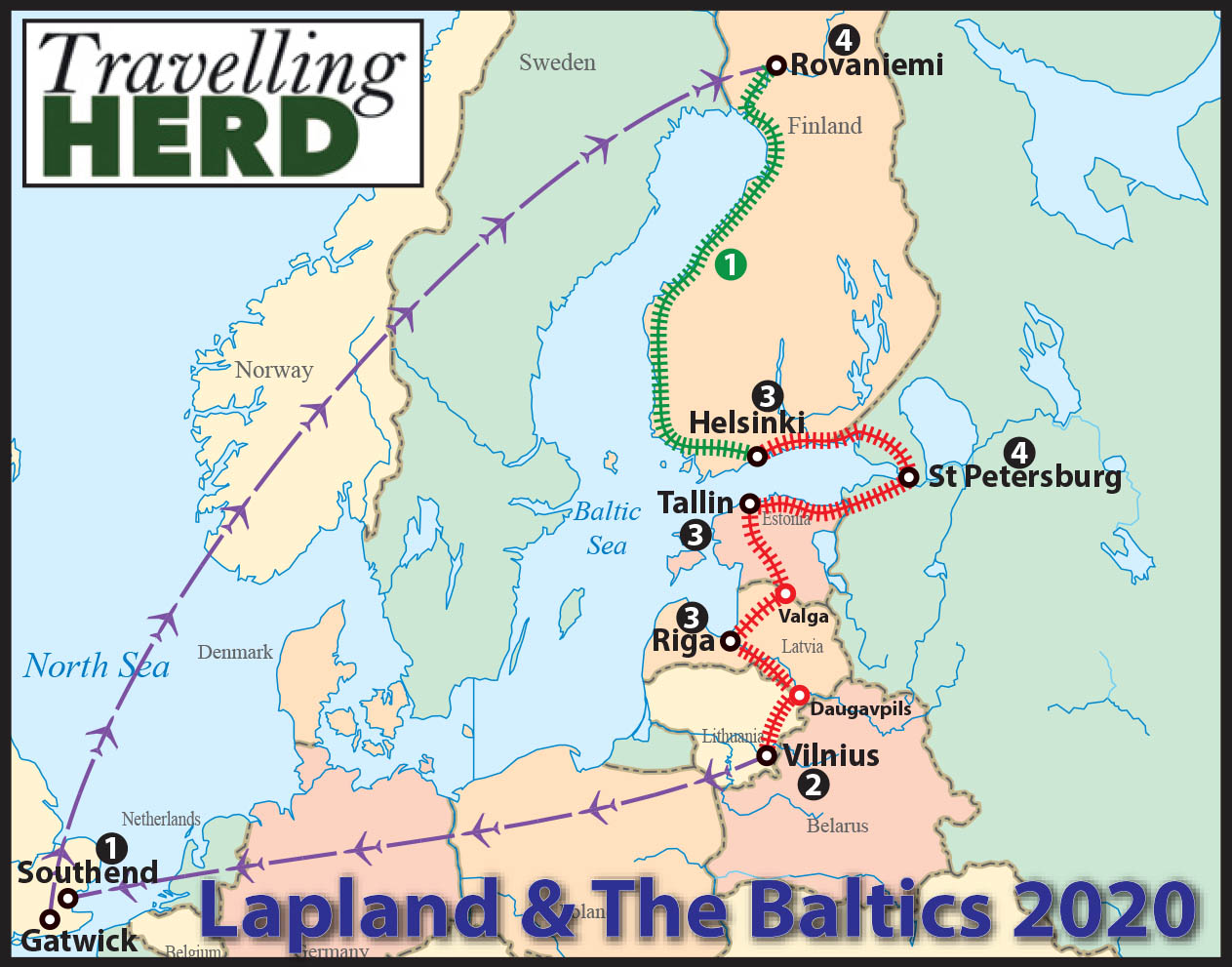
Video of the day:
Selfie of the day:
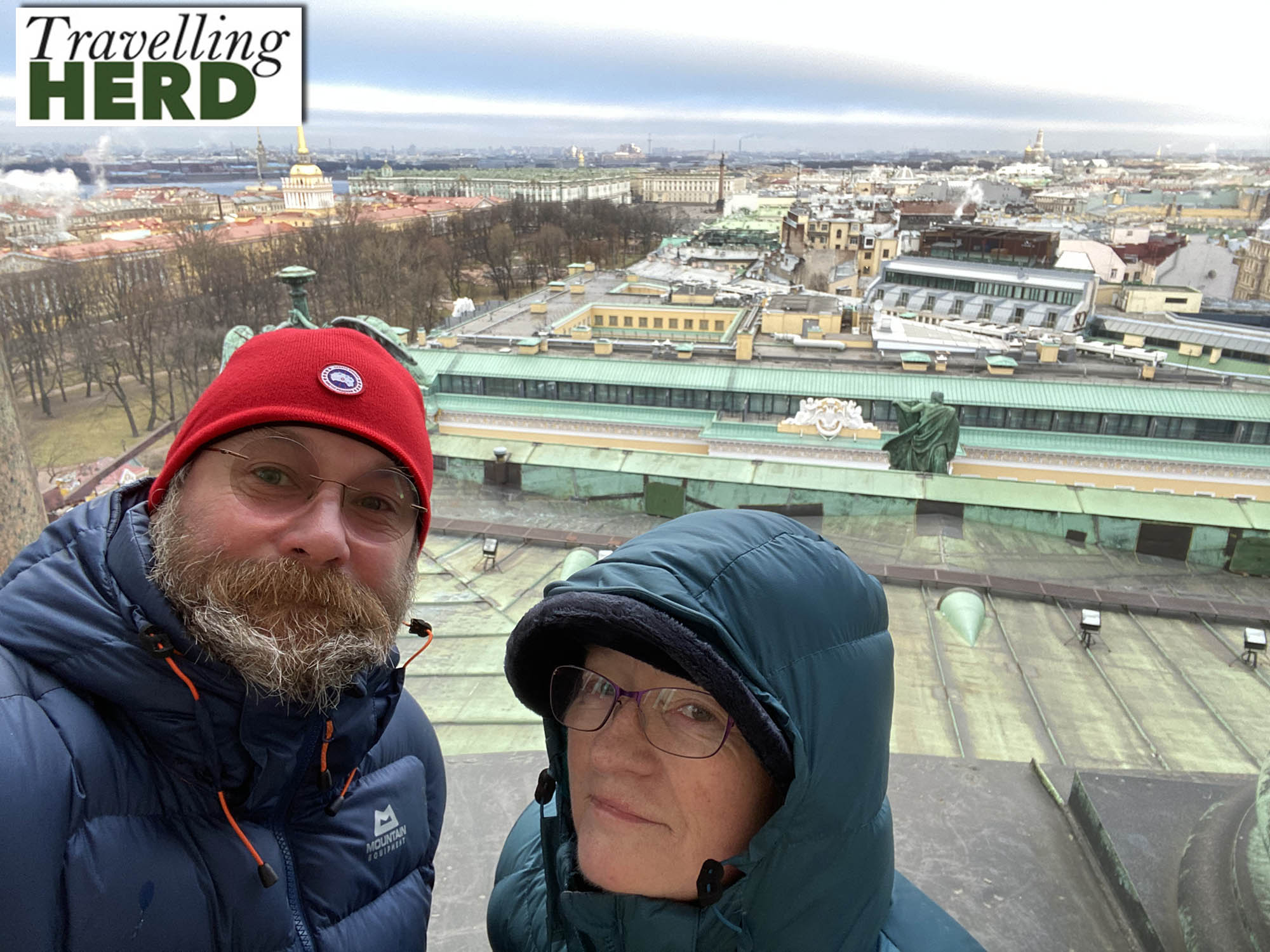
Dish of the day:
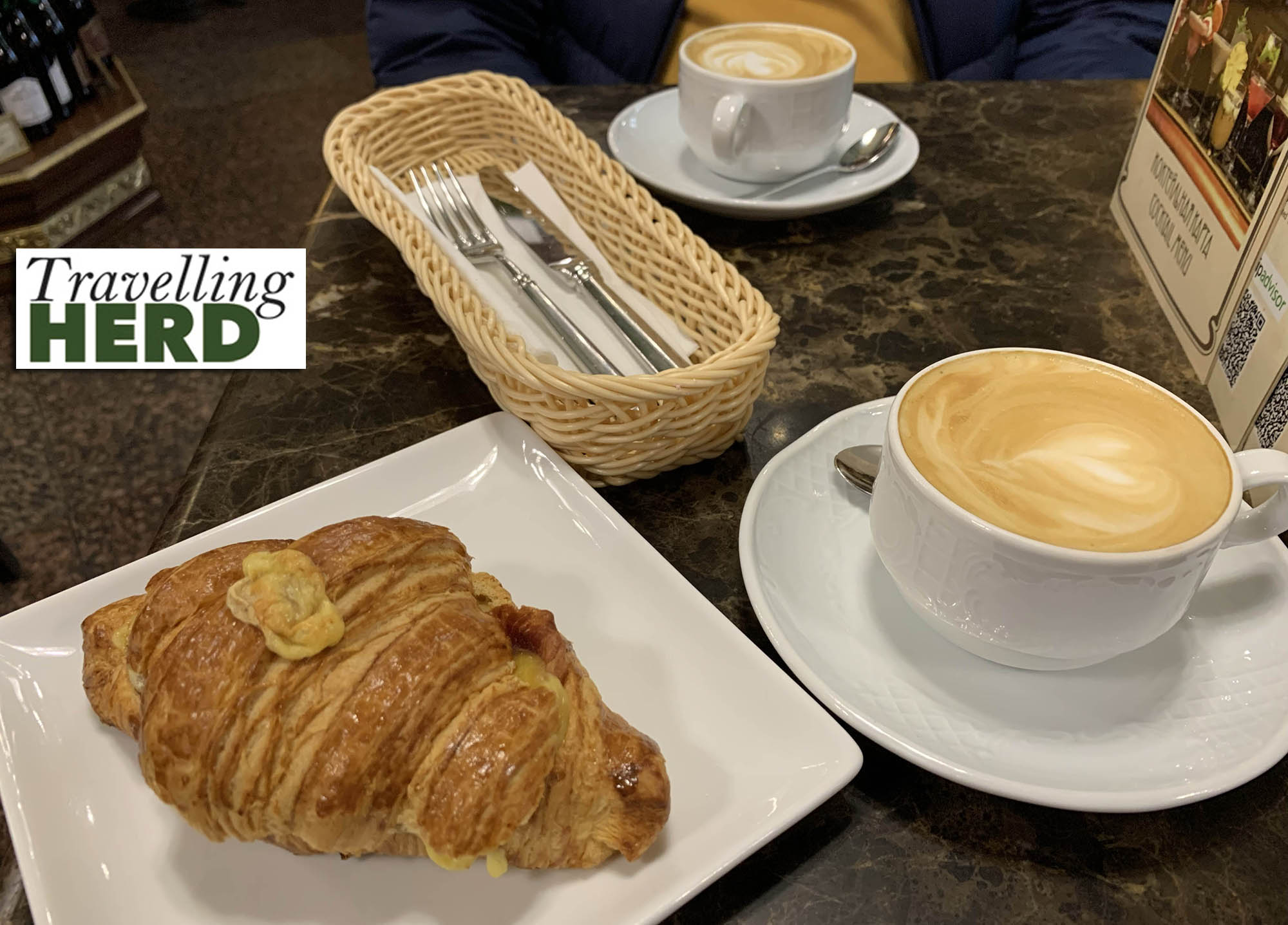





![USA ’22 #9: The Empire Builder [Chicago to New Orleans]](https://i0.wp.com/iciel.uk/imagesTH/22-03-USA/Post9/22-03-09-feature.jpeg?resize=510%2C510)
One thought on “A day in St Petersburg”
looking forward to your Tallinn Blog !